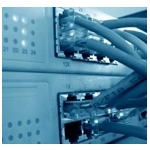 Affordable access to broadband telecommunications networks and services has become practically essential in today’s world, whether you live in the U.S. or a developing-world country. So which countries have the cheapest residential broadband service rates and where is stand-alone residential broadband access most expensive? Point Topic’s “Broadband tariff country scorecard – Q1 2014” tells the tale.
Affordable access to broadband telecommunications networks and services has become practically essential in today’s world, whether you live in the U.S. or a developing-world country. So which countries have the cheapest residential broadband service rates and where is stand-alone residential broadband access most expensive? Point Topic’s “Broadband tariff country scorecard – Q1 2014” tells the tale.
Point Topic market researchers converted monthly stand-alone residential broadband subscription rates spanning 90 countries – including copper, cable and fiber networks – to U.S. dollars and adjusted them for Purchasing Power Parity (PPP) in order to make something of an “apples-to-apples” comparison. Monthly residential broadband subscription rates as of 1Q proved to be lowest in France, Romania and Japan and highest in Bolivia and Peru, they found.
For Q1 2014, Point Topic found the global average monthly charge for residential broadband services was $76.61. The average bandwidth provided by residential services was 55 Mbps, meaning the global average cost per megabit was $1.39.
The U.S. ranked 43rd of the 90 countries surveyed in Point Topic’s market research and analysis, ranking just behind Colombia and one place ahead of Greece. Monthly U.S. broadband subscription rates did fall below the global average of $76.61, however. Access to actual U.S. average broadband pricing data requires a subscription to Point Topic, but it’s estimated to be in the $60 – $65 price range.
More generally, Point Topic market researchers found that average monthly broadband subscription rates in Western Europe and Asia-Pacific “achieve better ‘value-for-money’ for their fiber broadband services as they receive higher speed services at a lower cost” as of 1Q this year.
Measured in terms of dollars-per-megabit, the average monthly combined stand-alone and bundled residential broadband subscription for copper networks in North American came in at $8.54, that for cable at $2.03 and that for fiber at $1.45, Point Topic found. The higher copper cost can be attributed to the “… bandwidth differential that can be achieved over end to end copper compared to cable and fibre.”
“North America continues to be comparatively expensive per megabit for all technologies,” Point Topic concluded. “There are some reporting differences, the US has strict requirements on promises of ‘up to’ bandwidth, however they don’t account for the significant multiples in cost in North America compared to Europe and Asia Pac.”
In terms of network carrier technology, copper-based networks and broadband services provide the worst value-for-money for subscribers in every market. Furthermore, a lack of alternatives, either in terms of technology or service providers or both, translates into higher broadband service costs, Point Topic highlighted.
“In Latin America, Middle East and Africa, and South and East Asia, most customers still have a limited choice of alternative technologies and are forced to pay a premium price for legacy broadband due to a lack of competition. In North America, there is still a lack of competition, but on a region by region basis. Copper prices are high because they can charge more in areas where there isn’t cable or fiber.
“In Latin America, South and East Asia and Asia-Pacific, fiber-based services have a lower cost per megabit than cable. In North America and Europe, cable and fiber are much more evenly matched. There is much more cable in these regions which is increasingly competing with fiber, bringing the costs down.”


